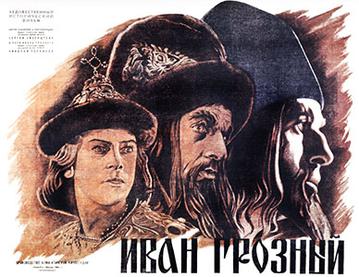
It is evident in 2008 that Sergei Eisenstein is probably the greatest director who ever lived. Every one of his six films is an unqualified masterpiece. Of the silent directors who made the transition to sound, the stand-outs are obviously:
F. Lang: Metropolis--> M
C.T. Dreyer: Joan of Arc--> Day of Wrath
C. Chaplin: Gold Rush--> The Great Dictator (one could say Chaplin's problems with sound were more as an actor than as a director)
C.B. DeMille: The Ten Commandments--> The Ten Commandments
Y. Ozu: Story of Floating Weeds--> Tokyo Story
J. von Sternberg: Docks of New York--> Blue Angel
In both silent film and sound film, Eisenstein is a titan, but taken together, it can be said that no one made the transition as well as he. No one would compare the sound Testament of Dr. Mabuse with the silent Dr. Mabuse the Gambler (and this is leaving aside Lang's dismal Hollywood work); DeMille's sound epics are ripe for parody; and Dreyer, Ozu, and Sternberg--their important silent films are rather late (Joan of Arc: 1928, Floating Weeds: 1934, Docks of New York: 1928), where Strike and Battleship Potemkin are rather earlier: 1925.
[It really is a shame that sound came along and ruined everything. 1927 brought us Napoleon, The General, The Lodger (Hitchcock!), Metropolis, and Sunrise... and, alas, The Jazz Singer. I don't lament the appearance of sound, but I do mourn the end of silent film as a creative medium.]
Anyways, Eisenstein's work in Ivan the Terrible cements his claim to being the best director of sound films, as well. The pacing, the lighting, the music, the makeup, the battle scenes, the costumes, the bizarre color scene in an otherwise B&W movie!! (I cannot say the script, for I watched it today without subtitles...don't ask.) Countless classic moments, and all in a completely new style from his silent movies.
Now, the naive viewer would be correct in saying that Ivan the Terrible hardly *looks* like a movie from the 1940s. It's hard to believe that this film came after Casablanca, Citizen Kane, Gone With the Wind, etc. There is nothing breezy or ironical about Ivan the Terrible. It is very nearly a tonal monolith, like many great silent films. The point to make, though, is that Eisenstein's silent movies are nothing of this sort. Strike, October, and Potemkin have no characters at all--they are all expressions of collective, anonymous, and spontaneous action. Eisenstein's silent films bear no resemble to the Lang films that Ivan the Terrible somewhat resembles (Siegfried, Brunhilde's Revenge): 1920s Eisenstein would never focus on a Wagnerian king-hero. Thus, October (let's say) is far more breezy and associative than the very Shakespearean Ivan.
This difference is entirely political: Soviet art entered a major retrogression while Eisenstein was trying to make a film in Mexico (never finished), and so historical realism and major world-historical figures took the forefront in Alexander Nevsky and Ivan the Terrible, where his earlier films are experimental and always foreground a mass of people, playing down the role of party leadership.
This film is so full of remarkable moments that I can barely run through a list of them all. But the coronation, the siege of Kazan, the chess-board w/ giant shadows, the singing Muscovites in a long line strung out across the steppes, the church-play of the fiery furnace, the assassination in the church, or the jaw-dropping dance scene (in color!)----never a dull moment. One image stood out for me, this viewing, however: Ivan has just realized that his wife has been poisoned (back in Part 1), and he reaches his hands in despair across a table with the poisoned cup on it. And....he has...the most beautiful fingernails you have ever seen. It is stunning. The film is never crude, and the budget seems to have been reasonable, but only at this point does it strike one as a great sound film. We all know that once actor's voices could be heard, it changed the nature of the close-up. A close-up no longer suggests volume. But I don't know that a silent film would ever meaninglessly zoom-in on a pair of beautifully manicured male hands. And really, one might say, this is what is missing from Shakespeare.
No comments:
Post a Comment